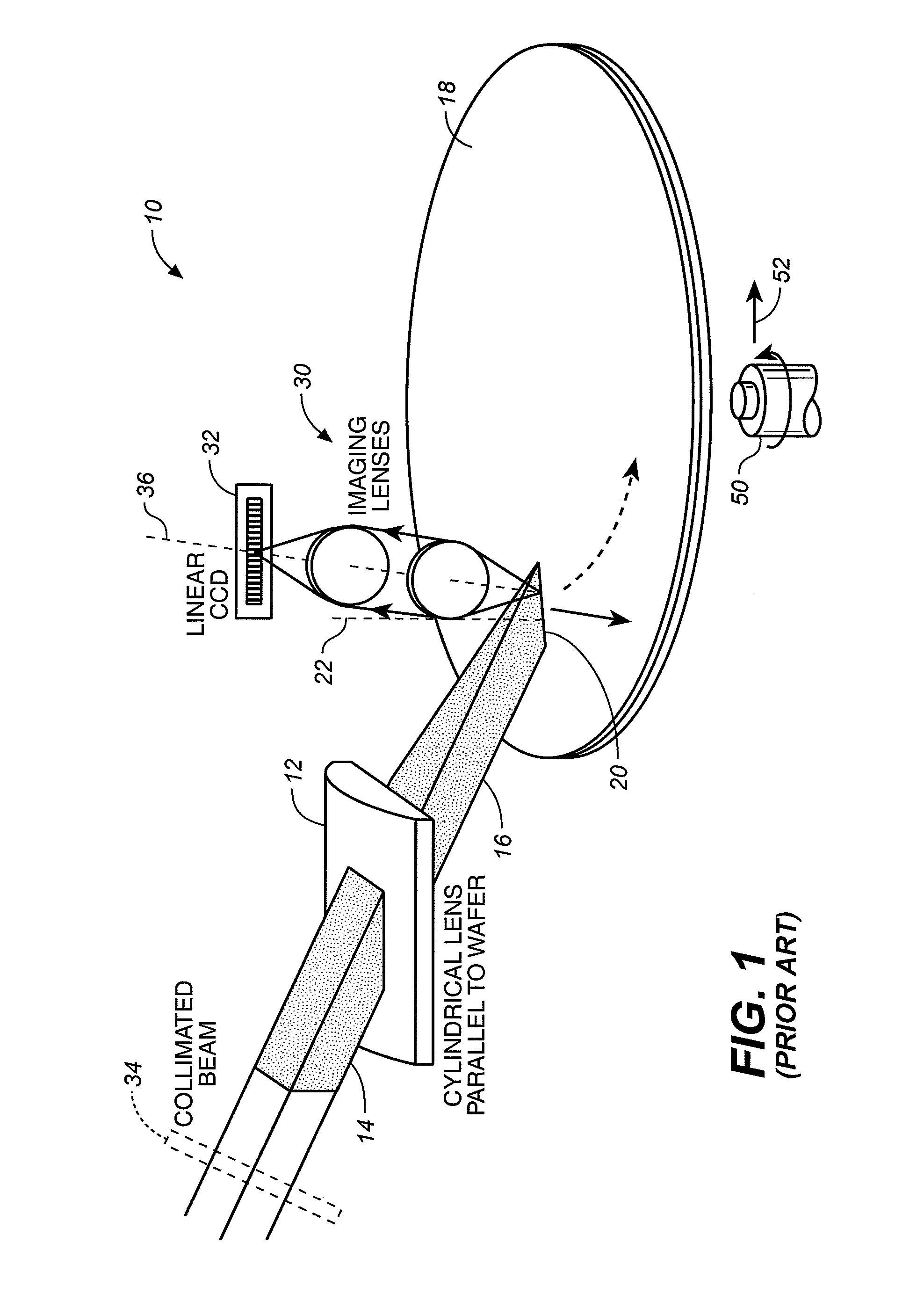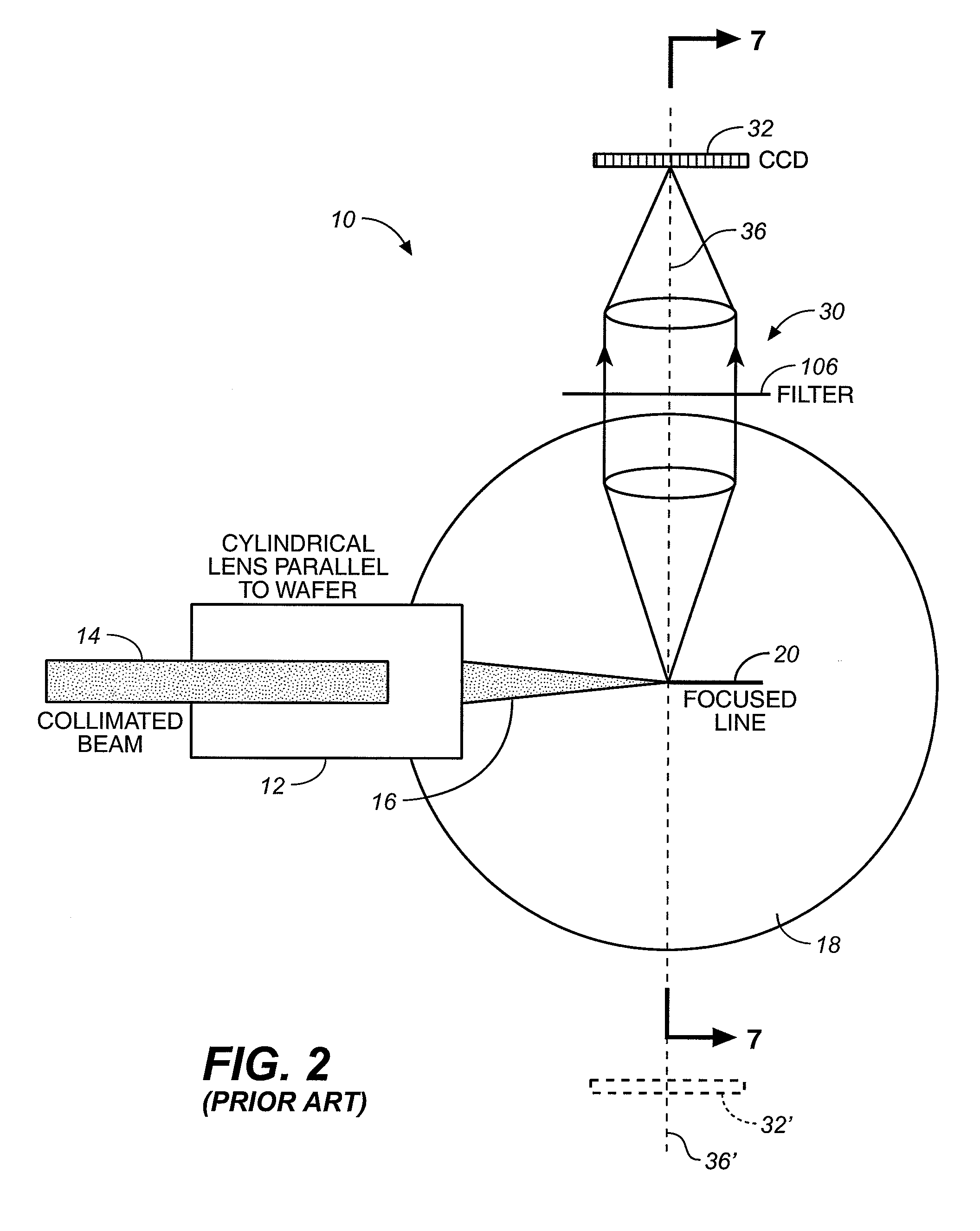Optical system for detecting anomalies and/or features of surfaces
a technology of optical system and surface, applied in the field of surface inspection systems, can solve the problems of system requiring significant time to image the entire surface of a photomask or semiconductor wafer, reducing the sensitivity of bright field inspection, and system generally having higher inspection speed, so as to achieve enhanced detection sensitivity, high detection sensitivity, and high throughput
- Summary
- Abstract
- Description
- Claims
- Application Information
AI Technical Summary
Benefits of technology
Problems solved by technology
Method used
Image
Examples
Embodiment Construction
[0040]Bright-field image capability may be defined as using illumination from within the collection cone of the imaging optics, including laser-illuminated bright-field imaging. Dark-field image capability may be defined as using illumination from outside the collection cone of the imaging optics but within a plane containing the illumination axis and the axis normal to the wafer surface. Double-dark-field image capability may be defined as using illumination from outside the collection cone of the imaging optics and an imaging axis (of the imaging optics) which lies outside a plane containing the illumination axis and the axis normal to the wafer surface. Near-angle-dark-field image capability may be defined as using illumination incident near to the collection cone of the imaging optics or within the collection cone of the imaging optics but with the specular reflection from the wafer surface blocked.
[0041]The description below in reference to FIGS. 1-8 is mostly taken from the Re...
PUM
| Property | Measurement | Unit |
|---|---|---|
| speed | aaaaa | aaaaa |
| incidence angle | aaaaa | aaaaa |
| incidence angle | aaaaa | aaaaa |
Abstract
Description
Claims
Application Information
 Login to View More
Login to View More - R&D
- Intellectual Property
- Life Sciences
- Materials
- Tech Scout
- Unparalleled Data Quality
- Higher Quality Content
- 60% Fewer Hallucinations
Browse by: Latest US Patents, China's latest patents, Technical Efficacy Thesaurus, Application Domain, Technology Topic, Popular Technical Reports.
© 2025 PatSnap. All rights reserved.Legal|Privacy policy|Modern Slavery Act Transparency Statement|Sitemap|About US| Contact US: help@patsnap.com



